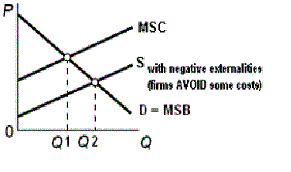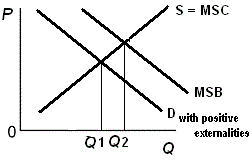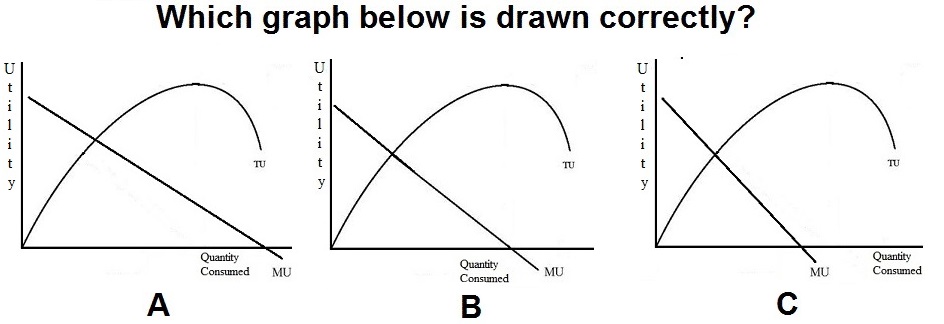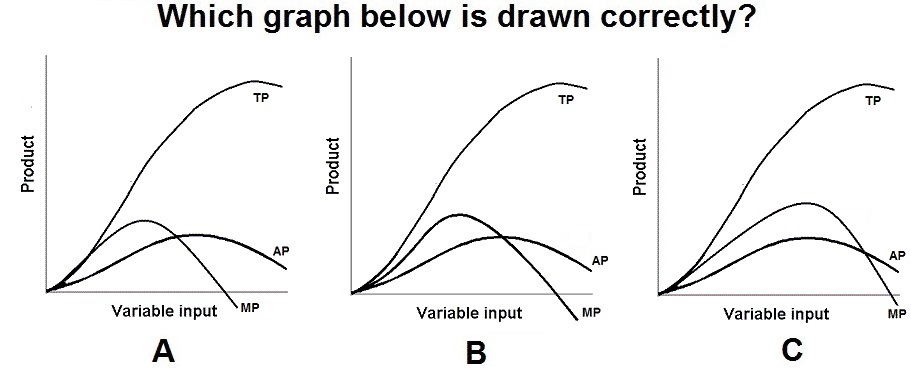7b
Production Costs in the Short Run
OK. Now that we know about (1) specialization and
teamwork, (2) getting crowded, and (3) overcrowded, from
lesson 7a, that is, we know why the TP curve has the shape
that it does, we are ready to look at the graphs that we
will be using most in this class: the cost curves (both
total and average). Remember, we are studying economic costs
so that we can calculate the MC - the extra costs of
producing one more unit of output. In chapters 8, 9, 10, 1nd
11 we will combine MC with MR (the exrtra benefits of
prodiucing and selling one more unit of output ) so that we
can find the profit maximizing quantity of output - where
MR=MC, or WHAT WE GET.
The costs curves show us how costs change with output.
The production function in lesson 7a showed us how output
changes when we add more resources. They are related. We
studied the production function so that we could learn about
(1) specialization and teamwork, (2) getting crowded, and
(3) overcrowded, because these concepts will help us
undersrand the shapes of the cost curves. Remember: whenever
we learn a new graph we must understand it shape (For all
graphs: DEFINE, DRAW, DESCRIBE SHAPE).
|
In this lesson we will be looking at the SHORT
RUN GRAPHS, We studied the definition of "short
run" in chapter 4b. It doesn't really have much to
do with time. The short run in some industries is
longer than the long run in other industries. In
the short run the quantity of at least one resource
is fixed -does not change. We will usually assume
that the number of factories or the size of the
factory does not change. So in the short run we are
adding more resources to an EXISTING factory . . .
and it may get crowded or overcrowded. We will look
at the long run costs (when we can change the
numberr of factories or the size of the factories)
in the next lesson, 7c.
Finally, we will be looking at three types of
costs: fixed, variable, and total (fixed plus
variable), and three "families" of costs: total,
average, and marginal. By the end of this lesson
you should be able to and correctly Define, Draw,
and Describe the shapes of: TFC, TVC, TC, AFC, AVC,
ATC, and MC. (For all graphs: DEFINE, DRAW,
DESCRIBE SHAPE).
|
Short Run Total Cost Graphs:
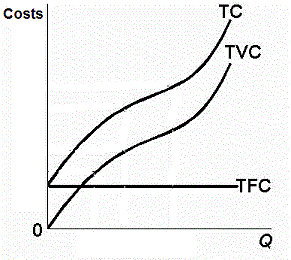
|
Short Run Average Cost Graphs:
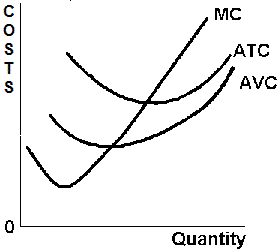
|
|
Topics:
Readings:
|
Video
Lectures: [Cengage
login] [TW
login] [notes]
- 7.3-1 Defining Variable Costs [TW 4.2.1
(4:23)]
- 7.3-2 Graphing Variable Costs [TW 4.2.2
(4:57)]
- 7.3-3 Defining Marginal Costs [TW 4.3.1
(6:41)]
- 7.3-4 Deriving the Marginal Cost Curve
[TW4.3.2 (10:59)]
- 7.3-5 Understanding the Mathematical
Relationship between Marginal Cost and Marginal
Product [TW 4.3.3 (10:26)]
- 7.3-6 Defining Average Variable Costs
[TW 4.4.1 (5:37)]
- 7.3-7 Understanding the Relationship between
Marginal Cost and Average Variable Cost [TW
4.4.3 (7:54)]
- 7.3-8 Defining and Graphing Average Fixed
Cost and Average Total Cost [TW 4.5.1
(6:55)]
- 7.3-9 Calculating Average Total Cost [TW
4.5.2 (4:51)]
- 7.3-10 Putting the Cost Curves Together
[TW 4.5.3 (4:51)]
- 7.3-11 Shifts in the Cost Curves [TW
4.6.4 (3:26)]
Optional
Review Videos:
- Micro
3.3 Cost Curves: MC, ATC, AVC, and AFC
(YouTube ACDC Leadership, 2:46)
- Micro
3.2 AP Economics - Marginal Product and Marginal
Cost: Econ concepts in 60 Seconds Review
(YouTube ACDC Leadership, 4:54)
- Costs
of Production and Cost Curves 1 of 2
(YouTube, ACDC Leadership, 5:17)
- Costs
of Production and Cost Curves 2 of 2
(YouTube, ACDC Leadership, 3:14)
- Marginal
Cost and ATC - Why do cost curves do that?
(YouTube, ACDC Leadership, 3:16)
|
|
Discussion Questions:
- Do the TC curve and TVC curve get closer
together?
- Do the ATC curve and AVC curve get closer
together?
- Where does the MC curve cross the ATC and
the AVC curves?
- What happens to TC when MC is declining?
when MC is increasing?
|
Must Know / Outcomes:
- Define and understand the terms and concepts
listed at the end of the chapter.
- Distinguish between fixed, variable and
total costs
- Explain the difference between average and
marginal costs
- Compute and graph AFC, AVC, ATC, and
marginal cost when given total cost data
- Explain how TC, TVC, and TFC relate to one
another
- do TC and TVC get closer together?
- Explain how AVC, ATC, and MC relate to one
another
- do ATC and AVC get closer together?
- why does MC cros ATC and AVC at their
lowest points?
- Explain the shapes of the total, average,
and marginal cost curves (TC, TVC, TFC, ATC,
AVC, AFC, and MC)
- Relate average product to average variable
cost, and marginal product to marginal cost
- Explain what happens to the cost curves if
there is a change in fixed costs; variable costs
(what can cause cost curves to rise or
fall?)
|
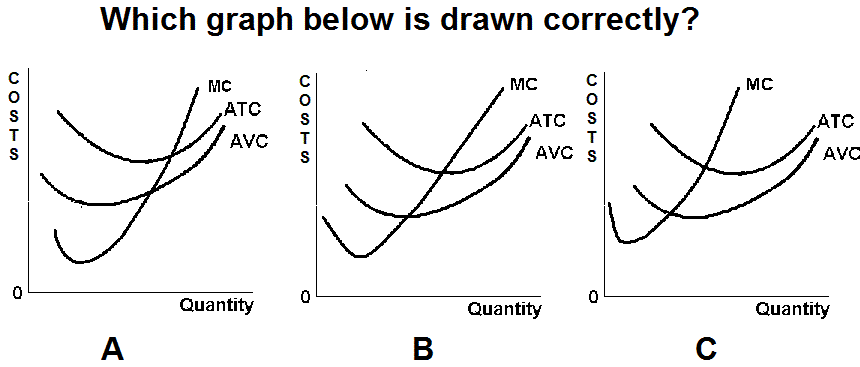
WHY?
|



